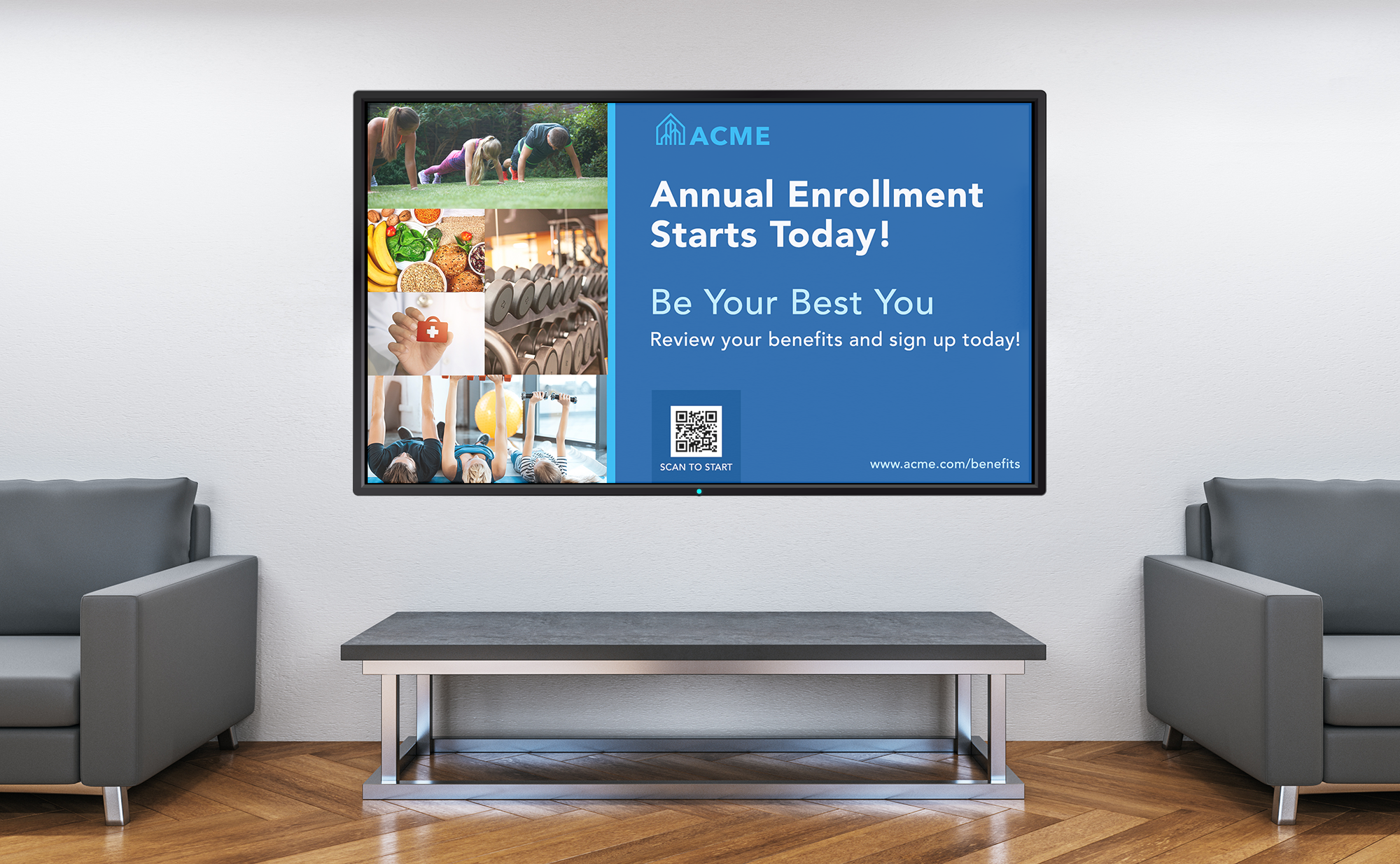From captivating passersby with interactive displays to subtly guiding customers towards purchases, digital screens are weaving their way into every corner of modern life. No wonder, the global market for digital signage is expected to soar past $26 billion by 2028!
But amidst the hype, a crucial question lurks: is it actually paying off?
On the one hand it seems like a simple task: Just measure the total financial impact of your digital signage over a given period, subtract the cost of your digital signage investment (media players, software, digital displays), divide the remainder by the cost and multiply by 100. It’s a straightforward digital signage ROI calculator: ($ value of digital signage impact – costs)/costs X 100 = ROI
And yet, for many of us, getting the information needed to plug into that calculator and measuring the return on investment (ROI) for digital signage can feel like chasing butterflies in a data blizzard. This guide will help you navigate the data-driven terrain and unlock the true potential of your digital signage investment by breaking the task into three steps. Follow these steps and you’ll ensure your digital signage is more than just a pretty display; it will be a strategic instrument, delivering ROI for your business.
One: Identify Your Business Objectives
You might know that digital signage is helping your business but find it hard to measure the financial outcomes. This is where the concept of Return on Objectives (ROO) steps in. While ROI looks specifically at whether your financial goals are being met, ROO holistically considers if your business objectives are being met.
In other words, ROO expands the focus from direct financial metrics to other measures of meaningful impact. It forces us to ask: What are our specific objectives for this digital display? Is it boosting brand awareness, driving sales, or improving customer experience? In many cases objectives are relevant to your industry. For example, In retail banking objectives are often tied to specific customer outcomes like increasing product inquiries or improving the in-bank experience, whereas in manufacturing objectives center on operational efficiencies like improving safety and increasing product output. Clearly defined objectives are the first step in reaching digital signage ROI, ensuring every pixel and interaction aligns with your business’s direction.
Follow these important tips to help you identify your objectives and align them with KPIs:
- SMART goals are your friends: Make your objectives Specific, Measurable, Achievable, Relevant, and Time-bound.
- Think beyond the obvious: What outcomes are you hoping to achieve with digital signage? It’s not just about views, think instead about how it can influence behavior.
- Regularly review and adapt: Your objectives and KPIs might need to evolve as your business and audience change. Stay flexible and data-driven.
Once you have your objectives firmly in sight, you can choose the right metrics, not just the easiest, and identify if you’re achieving them. Whether you’re looking to identify financial outcomes through ROI or business outcomes through ROO, you’re going to have to dig deep into your signage, exploring data and constantly adapting your content and strategies.
Two: Choose Your Key Digital Signage Metrics
Forget the tired click-through rate obsession, there’s a treasure trove of digital signage engagement metrics waiting to be unearthed! For brand awareness, KPIs might include social media mentions and website traffic. For sales, conversion rates and product clicks could be your focus. And for customer experience, perhaps dwell time and customer satisfaction surveys make their way to the forefront. Remember, the ideal KPIs and tools are specific to your objectives. Don’t get caught up the analysis paralysis!
Standard Digital Signage KPIs
At the baseline of measuring your digital signage impact is knowing how many people your messages are reaching – and affecting.
- Views: How many passersby are drawn to your digital canvas? You can measure the number of views of your content through extrapolation (for example, estimate how many customers walk through the lobby where you have a screen) or through cameras and external sensors.
- Dwell time: The ultimate measure of captivation. How long do viewers linger? Here as well, you can capture this metric using cameras and pressure sensors.
- Interactions: If your digital signage is interactive, like a kiosk, do viewers click, scroll, or simply glaze over?
Conversion Metrics
Did your signage guide viewers towards a desired action that has an associated dollar value? Conversions that impact the bottom line could include anything from opt-ins to messaging to sharing a referral code.
- Products sold: The holy grail of ROI, revealed! Track the increase in products sold directly attributable to your digital signage. Many digital signage software systems integrate with point of sale systems making sales impact easy to capture.
- Referrals: Sharing referral codes on your digital signage is a great way to track if it’s leading to word-of-mouth customer acquisition.
- Newsletter and SMS sign ups: Customer data has a value to any business. Share QR codes and calls-to-action to gather more opted-in customer data.
Operational Efficiency Metrics
- Wait time reduction: Is your signage streamlining the customer experience? Digital signage is proven to reduce wait time perception. Track how wait times melt away as viewers engage with your digital displays, freeing up both staff and customers.
- Employee efficiency gains: Can your signage empower your team? See how digital assistants and interactive displays boost employee productivity and satisfaction.
- Increased use of meeting room spaces. You’ve spent the time and money creating a beautiful and hospitable conference room. Could a booking system integrated with digital signage get more of your employees to make use of it?
- Lost time incidents or other accident reduction. Digital signage can be used to count up days to lost time incidents – but it can also be used to share safety information and reminders that reduces them. Track the number of days without an incident and see if it improves once you’ve implemented digital signs.
- Response time reduction: If you’re seeking to have employees, students or customers take an action, can you reduce the amount of time it takes? Fire drills, inventory alerts and more can become more efficient when digital signage is involved.
Brand Awareness Metrics
- Social media mentions: Is your signage generating buzz online? Track how your digital displays become conversation starters, spreading brand awareness like wildfire.
- Positive sentiment increase: What emotions does your signage evoke? Sentiment analysis reveals if your content resonates positively, fostering brand loyalty and advocacy.
- Website traffic: Is your signage driving online engagement? Share a trackable link or QR code on your signage and track the surge in website visits attributed to your digital displays, proving their power to bridge the gap between physical and digital realms.
Remember, the most valuable gems are often the ones you least expect. By digging deeper than views and exploring these diverse engagement metrics, you’ll unlock the true return on investment of your digital signage, turning it from a flashy screen into a strategic asset for your business.

Three: Turn Your Metrics Into Proof of ROI
Now that you have some hard numbers to associate with your digital signage, how can you calculate the return on investment or prove impact on your business objectives?
First, let’s compare before and after: The KPIs that resonated before your digital signage installation and the ones echoing now. Did views grow after introducing interactive elements? Did dwell time rise with captivating visuals? Did sales soar with targeted promotions? These comparisons form the baseline of your digital signage ROI journey, revealing the impact of your digital orchestra on key metrics.
Also, look for correlations: Pay attention to if certain content types correspond to spikes in engagement and sales. When you launched product demonstration videos did you also see an increase in sales of those products? Did humorous videos boost brand mentions? Did interactive quizzes increase shares on social media? These correlations guide you to refine your content and orchestrate even greater results.
And now, let’s raise the volume with A/B testing. Experiment with different content, layouts, and calls to action. Did portrait videos outperform landscapes? Did bold CTAs resonate more than subtle ones? Did shorter clips outshine longer ones? A/B testing refines your digital signage, ensuring every view hits the right pitch for maximum engagement and sales.
Remember, the key is to be an active listener, not just a passive observer. Dive deep into the data, identify the whispers, and amplify them into actionable insights. By comparing, correlating, and testing, you’ll transform your digital signage from a passive screen into a dynamic driver of success, orchestrating a symphony of ROI that resonates throughout your business.
Gathering the Untold Stories with Qualitative Feedback
Data whispers, metrics shout, but sometimes, the most valuable insights lie hidden in the quiet corners of human experience. This is where qualitative feedback, the voice of your audience, becomes your secret weapon for unlocking true digital signage ROI.
Surveys and interviews reveal the deeper emotions, motivations, and perceptions that data can’t capture. Do viewers find your content informative or intrusive? Does it enhance their shopping experience or leave them feeling bombarded? These unvoiced narratives are the missing pieces of the digital signage ROI puzzle, crucial for crafting impactful and meaningful digital signage experiences.
Imagine a customer who lingers longer after watching a product demo, not because of dwell time metrics, but because the video sparked a personal connection. Or a visitor who shares your signage on social media, not because of a click-through rate, but because it resonated with their values. Qualitative feedback unveils these hidden gems, allowing you to:
- Optimize content for deeper engagement: Understand what truly resonates with your audience and tailor your content accordingly. Are lighthearted visuals more effective than serious ones? Do interactive elements spark genuine interest or frustration? Listen to the whispers, and your content will sing.
- Identify unexpected ROI avenues: Discover how your signage impacts customer experience beyond sales. Does it reduce anxiety during checkout? Does it make waiting more pleasant? These qualitative insights can lead to unexpected benefits and ROI opportunities.
- Build brand loyalty and advocacy: Uncover the emotional connection viewers form with your signage. Do they feel informed, entertained, or empowered? These positive emotions translate into brand loyalty and advocacy, the true currency of long-term success.
Gathering qualitative feedback doesn’t require fancy tools or expensive surveys. Simple interviews, open-ended questions in online forms, or even casual conversations with viewers can unlock a treasure trove of insights. Remember, the key is to listen actively, without judgment, and let the stories unfold.
Ensuring Ongoing Digital Signage ROI
Ah, the elusive ROI. You might have chased it down by defining your objectives, measuring your KPIs and developing insights, but the work has only just begun! The journey to digital signage ROI is not a sprint to a finish line, but a continuous marathon of optimization.
Think of your digital signage as a living, breathing organism, constantly evolving and adapting to its environment, the ever-changing needs of your audience. The KPIs you set today might need adjustments tomorrow. The content that resonates now might lose its rhythm in the future. Embrace this dynamism, for it’s the key to unlocking the full potential of your digital signage investment
So, how can you keep tracking your Digital Signage ROI?
- Regularly evaluate your KPIs: Don’t let them gather dust on a shelf. Monitor their performance, identify trends, and adapt your strategy accordingly. Is dwell time dropping? Perhaps your content needs a refresh. Are sales not singing their usual tune? Maybe your calls to action need a rewrite.
- Embrace A/B testing as your constant companion: Experiment with different content types, layouts, and placements. See what makes the audience cheer, what makes them yawn. Treat A/B testing as your laboratory, where you can refine your digital magic and continuously improve your ROI performance.
- Stay agile, adaptable, and data-driven: Don’t cling to rigid strategies when the data whispers new possibilities. Be willing to adjust your content, placement, and even your overall objectives based on what you learn. Remember, flexibility is the fuel of optimization.
- Never stop listening: Qualitative feedback remains your secret weapon. Conduct regular surveys, hold informal conversations, and keep your ears open to the unvoiced stories of your audience. Their insights are the compass guiding you towards even greater ROI horizons.
The journey to digital signage ROI is not a destination, but a continuous exploration of data, creativity, and adaptation. Embrace the ongoing quest, and your digital signage will become more than just a screen – it will be a dynamic force, shaping customer experiences, driving brand love, and building business success that never fades.
Don’t let your digital signage be a silent screen. If you still have questions about how to define your digital signage ROI contact the Korbyt Solutions Team today and let’s build your digital signage blueprint together.








